UK and Ireland bid for EURO 2028
source: StadiumDB.com; author: Rafał Zagrobelny
 Will the fans of “Sons of Albion” sing "Football's coming home" again in 2028? If that happens, they will do it together with the Welsh, Scottish and Irish - including those from the north. The federations of these five countries have announced their joint bid to host the European Championship in 2028.
Will the fans of “Sons of Albion” sing "Football's coming home" again in 2028? If that happens, they will do it together with the Welsh, Scottish and Irish - including those from the north. The federations of these five countries have announced their joint bid to host the European Championship in 2028.
Advertisement
The British and Irish had previously announced a bid to host the 2030 World Cup. In the end, due to economic aspects, they decided to focus on the Euro. At least that is what you can read in the joint statement released by the five federations.
Football fans may be experiencing a bit of déjà vu, because just over six months ago the final of the European Championship took place at London's Wembley. The temple of English football hosted a total of eight games, with four matches also taking place in Glasgow’s Hampden Park. Dublin with the Aviva Stadium was then dropped from the list of host cities due to coronavirus restrictions.
In six years' time, Europe's top teams could play in any of the stadiums mentioned above. But the full list of venues is obviously longer. Below we present the profiles of English, Welsh, Scottish and Irish stadiums that should be potential arenas of the championship.
Northern Ireland is currently in the worst situation. Windsor Park is too small, with only 18,614 seats (UEFA's minimum is 30,000). In Belfast they are thinking of a complete redevelopment of the small Casement Park, but the local inhabitants are still holding back the project.
England - Wembley, London
One of the most recognisable stadiums in the world. It hosts English national team home matches, the final matches of the FA Cup, the English League Cup and the Community Shield. The arena hosted the Champions League final twice - in 2011 and 2013.
The venue was originally built on this site in 1923. In 2003, the historic stadium was demolished and construction of the new Wembley began. The work went on in an atmosphere of controversy and delays. The final cost exceeded the original plans twice (£757 million). The first match was played here on 24 March 2007 by the youth teams of England and Italy (3-3).
The stadium has a capacity of 90,000 and is Europe's second largest venue, after Camp Nou. Its most characteristic element is the steel arch connecting the eastern and western ends of the facility. The structure spans 315 metres, rises 133 metres high and is a distinctive landmark in north-east London. The arch also has a specific function - it collects the load of a huge, partially retractable roof.
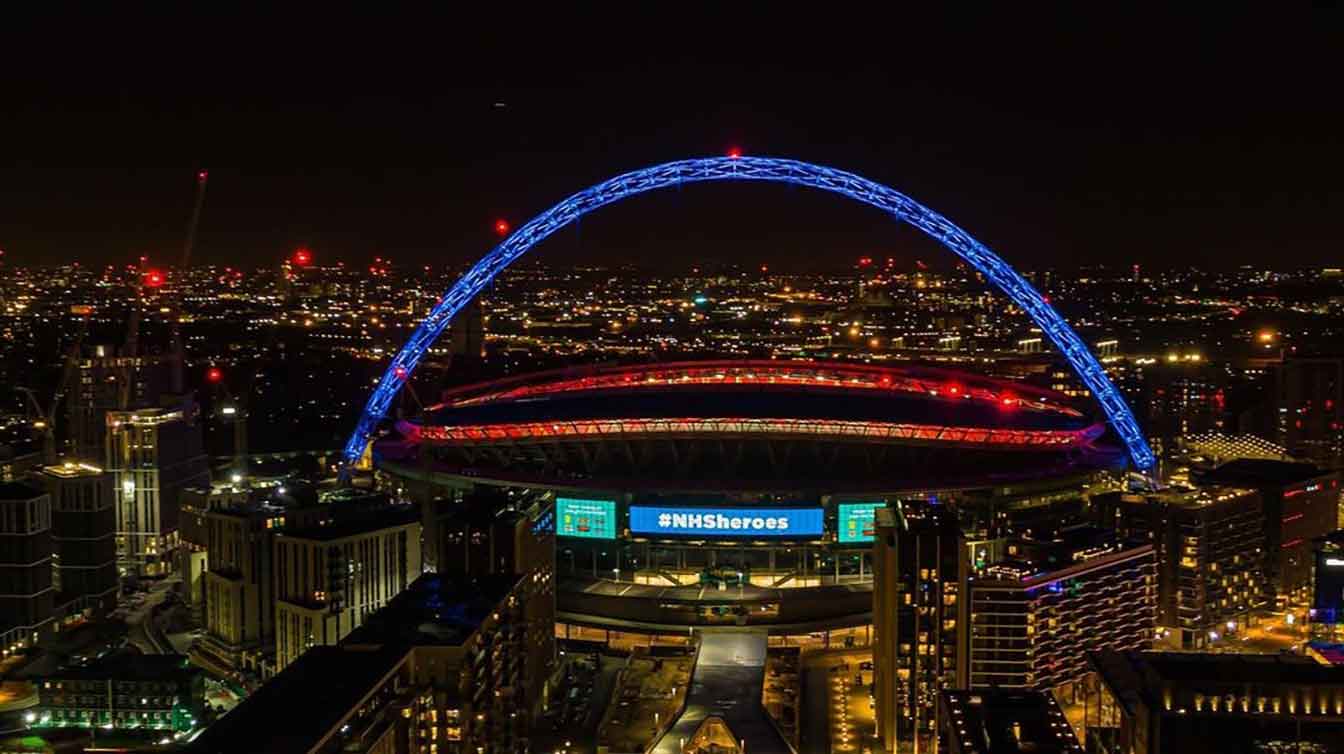 © Instagram: @highflyingdroneshots / www.highflyingdroneshots.co.uk
© Instagram: @highflyingdroneshots / www.highflyingdroneshots.co.uk
Designers (HOK Sport, Foster&Partners) divided Wembley stands into 3 tiers. The lowest has 34,303 seats, the middle - 16,532 and the highest - 39,165. The second tier is entirely dedicated to business customers. The facility is equipped with escalators, 2,618 toilets and has a perimeter of approximately 1 km.
Wembley is not only the most important British football stadium, but also the scene of legendary boxing fights. In 1963, Cassius Clay (Mohammed Ali) and Henry Cooper faced each other here. More than 50 years later, in 2017, Anthony Joshua and Vladimir Klitschko had a great bout in the new stadium.
Wembley has also hosted major cultural events, including the Concert for Diana, the Live Earth benefit concerts and the famous Live Aid with the iconic performance by Queen in 1985.
Wales - Principality Stadium, Cardiff
Built in 1999 at a cost of £167m. The national venue of Welsh rugby players for 17 years was known as Millennium Stadium. It was designed by international studio Populous. At the time of completion it was the third stadium in the world to feature a retractable roof (after Amsterdam ArenA and GelreDome). It takes 20 minutes to fully close or open the canopy.
 © Jon Candy (cc: by-sa)
© Jon Candy (cc: by-sa)
The facility can hold up to 74,500 spectators. The main two-tier stand was built on the structure of the stadium that had stood on the site since 1984. The other three-tiered stands were created as a result of the Welsh Rugby Federation buying up a surrounding parcel of land and demolishing the existing buildings.
The structure of the stadium rests on four 90.3-metre masts. The arena has 22 bars, 7 restaurants, 17 first aid stations, 12 escalators and 7 lifts. The venue has a curtain system that allows ‘cutting off’ stands for smaller events to 46,000 or even 12,000 seats only.
 © Phil Rogers (cc: by-nc)
© Phil Rogers (cc: by-nc)
The stadium was opened with a rugby match between Wales and South Africa, won by the hosts 29:19. The first ever UK indoor football match was also played here. This was the 2001 FA Charity Shield (today Community Shield) game, in which Liverpool defeated Manchester United 2:1.
In 2020, the venue became a field hospital to help Welsh medical services cope with hospital overflows caused by a pandemic.
Scotland - Hampden Park, Glasgow
One of the oldest still operating stadiums. With regular upgrades, the famous Scottish venue has been hosting a variety of sporting events since 1903! In its early years, it was considered the largest stadium in the world and held that title until 1950, when Maracana was built. In 1937, a record 149,415 fans watched the Scotland v England match at Letherby Drive in Glasgow. This is an official European attendance record.
Today, the capacity of the stadium is 51,866. This is primarily the result of the biggest redevelopment that took place in the 1990s, when the stadium gained, among other things, a new roof, administrative rooms and seats in all stands. It also became home to the Scottish football museum and a sports medicine centre.
Since its beginnings, the stadium has been owned by Scotland's oldest club, Queens Park FC. It is remarkable that this situation has persisted almost to this day, especially as it is now an amateur club. In 2019, however, an agreement was signed and the Scottish federation took over the venue for a price of £5 million.
The change of ownership is aimed at bringing Hampden Park in line with fans expectations. The stadium received poor reviews in a survey conducted by the Scottish Football Supporters Association (SFSA) a few years ago. However, there is a plan to gradually redevelop the venue. The hosting of the Euro 2028 games would certainly be a boost to the start of the major works.
Ireland - Aviva Stadium, Dublin
This is yet another attempt by this uniquely beautiful stadium to host a European Championship. The home of Ireland's football and rugby players was supposed to be the venue for four games during Euro 2020. The matches were eventually moved to St Petersburg, Russia, due to Ireland's Covid-19 restrictions.
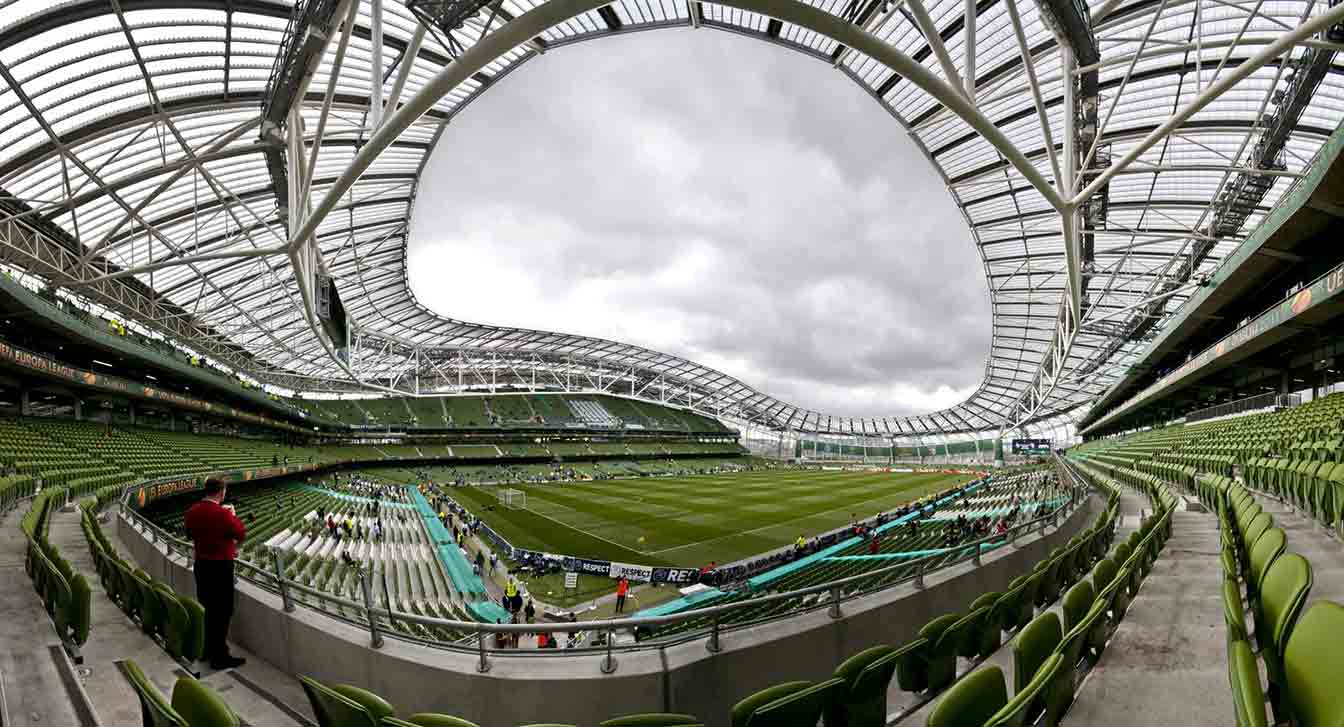 © Tiago Menezes (cc: by-nc-sa)
© Tiago Menezes (cc: by-nc-sa)
The stadium was built in 2010 as a new national venue. It stood on the site of the old Lansdowne Road. It is similar to the historic venue in having a north stand much smaller than the other stands. However, this is not a result of sentimentality on the part of the designers from Populous studio. This architectural disproportion is the result of the need to ensure access to sunlight for the residential buildings nearby.
Sunlight for the neighbouring houses is also provided by the material used for the roof and facade. These have been covered with polycarbonate louvres and glass that reflects the colour of the sky and the lighting conditions. The result is a unique and ever-changing flickering effect.
The cost of the investment was €410 million in total. The stadium can hold 51,700 fans and offers 11,000 business class seats and 1,300 VIP seats. Apart from the north stand, all three stands have four levels.
There is also an underground car park beneath the arena. The entire construction was supported by public money, but the rugby and football federations have a majority share. Since 2016, the venue gets all the power it needs from wind turbines.
Ireland - Croke Park, Dublin
For Ireland, we also decided to present the stadium on the other side of the River Liffey. Although much bigger than the Aviva Stadium, it has little to do with football on a day-to-day basis. It is a venue considered to be the home of Gaelic sports, where other disciplines are forbidden by law.
However, there has been a precedent in the past. In 2007-09, when the Aviva Stadium was built, both rugby and football teams moved to Croker. Now the FAI chief executive Jonathan Hill officially admits he is in talks with Gaelic Athletic Association over the possibility of Euro 2028 matches being played at the huge venue.
The final decision depends on whether UEFA decides to increase the number of teams taking part in the championship. If there are 32 teams competing for the Henri Delaunay Cup instead of 24, the chances of Croke Park hosting the games will increase significantly.
Europe's third largest stadium (82,300 seats) was designed in 1991. Construction took 14 years and was divided into four phases. Due to the specific nature of Gaelic sports, three tiers were used for the East, South and West stands. The reason for this was to ensure that the distance from the pitch, even in the furthest sectors, would not be too far.
The middle tier is known as the premium level. This is where the most expensive VIP seats are located and where the fans have access to restaurants and bars. The stadium has open structure - the north stand is a standing terrace, it is much lower and without a roof. It is disproportionately smaller than the rest of the stadium because it is bounded by a railway line. Years ago there was a hill on this spot from which fans watched the action on the pitch.
Irish national sport matches have traditionally been played in the daytime, which is why the installation of floodlights took place not so long ago, in 2007. There is also a Gaelic sports museum and conference centre inside the venue.
Who will host 2028 Euros?
The final announcement on the host of Euro 2028 is scheduled for September 2023. The British, in partnership with the Irish, are probably going to compete, among others, with Turkey and Italy. A deadline for bidders is marked for March 23, and an official announcement is expected to take place on April 5.
Advertisement

 StadiumDB
StadiumDB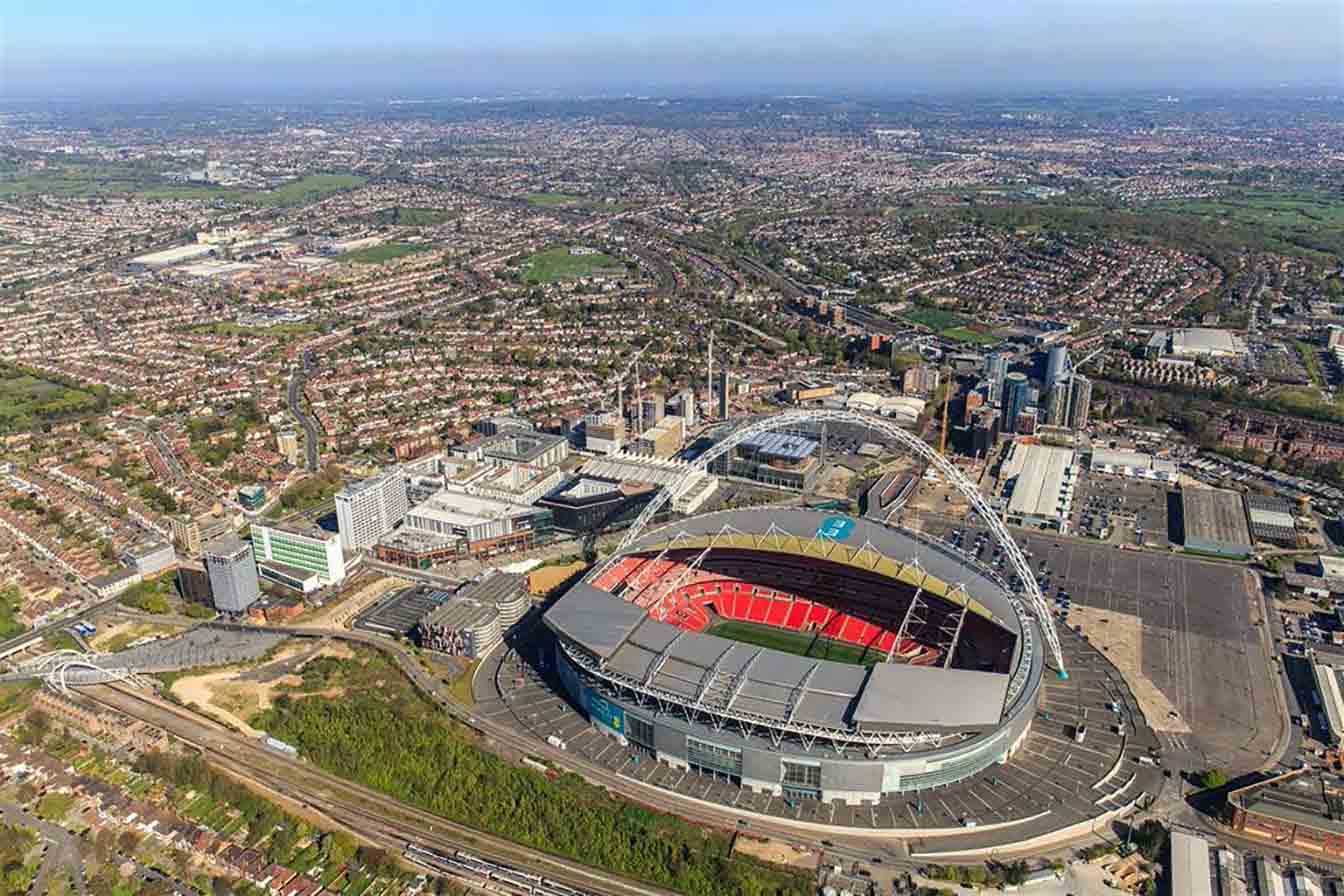 ©
© 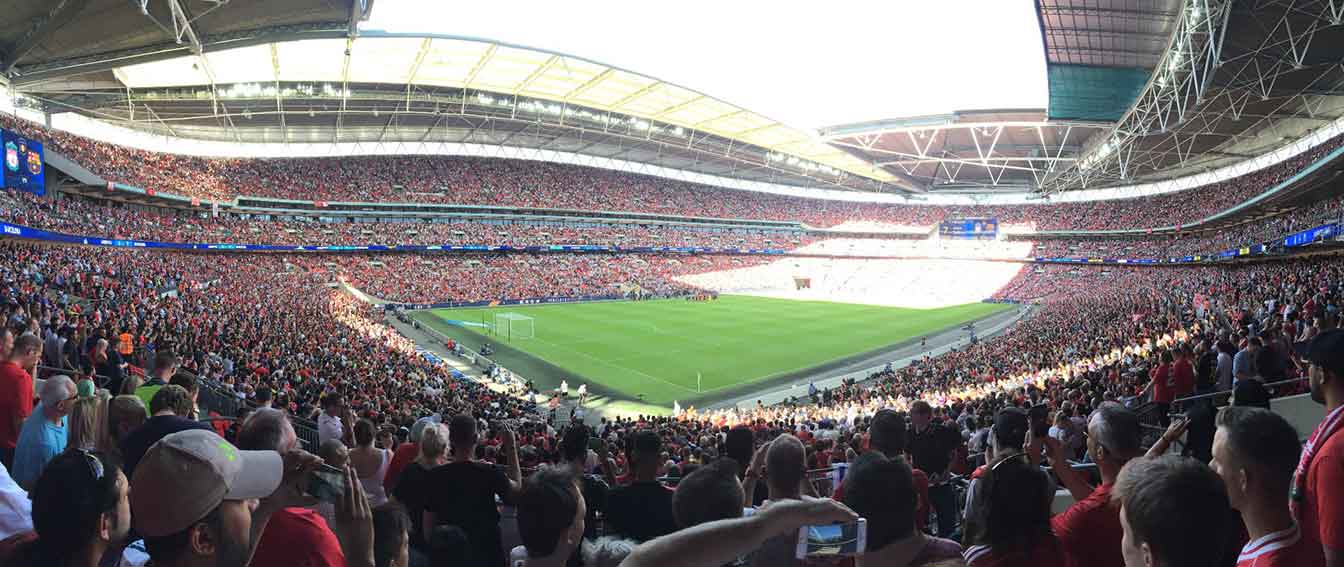 ©
© 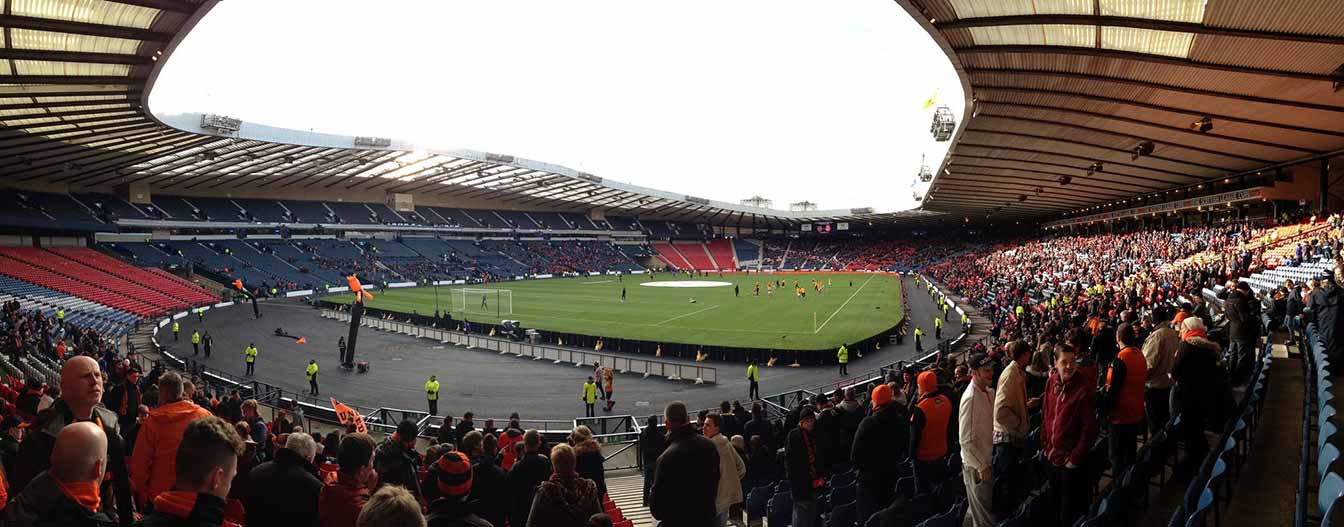 ©
© 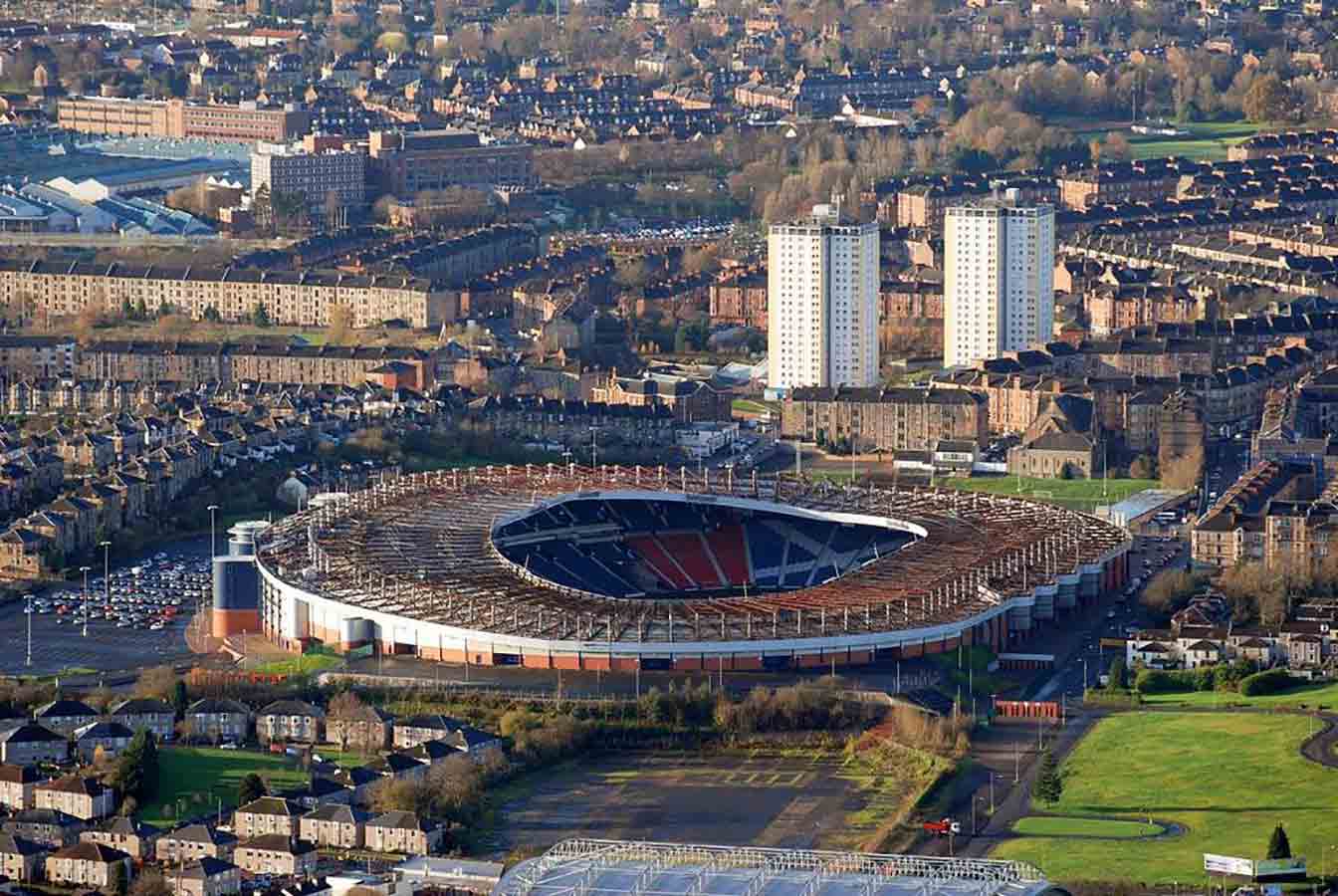 ©
© 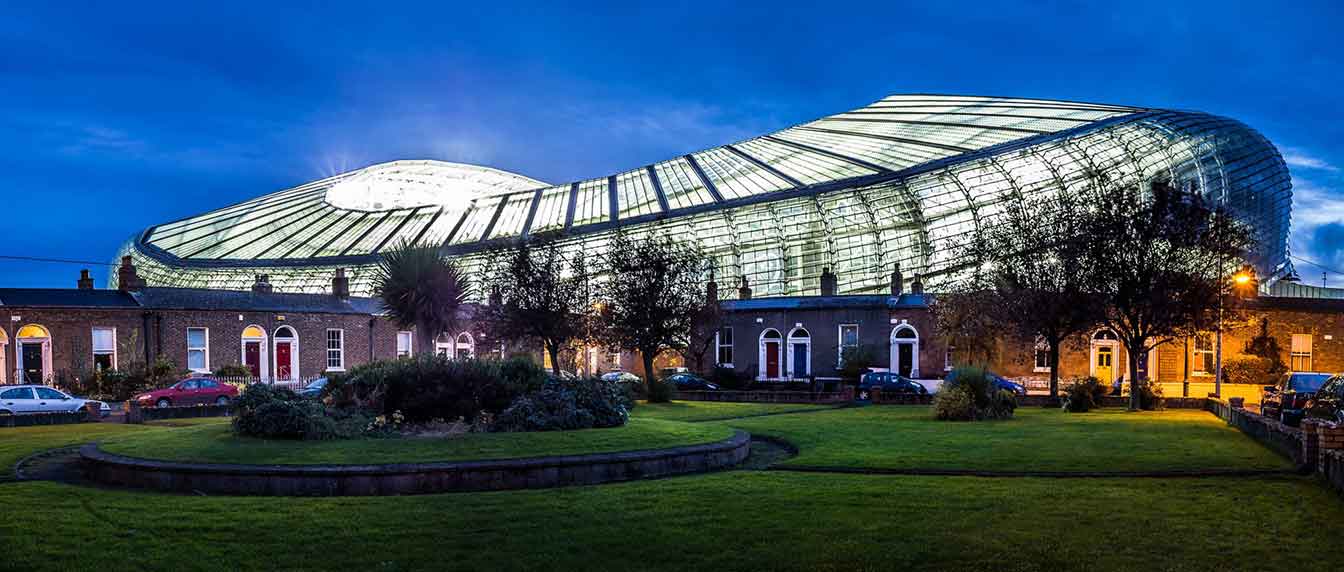 ©
© 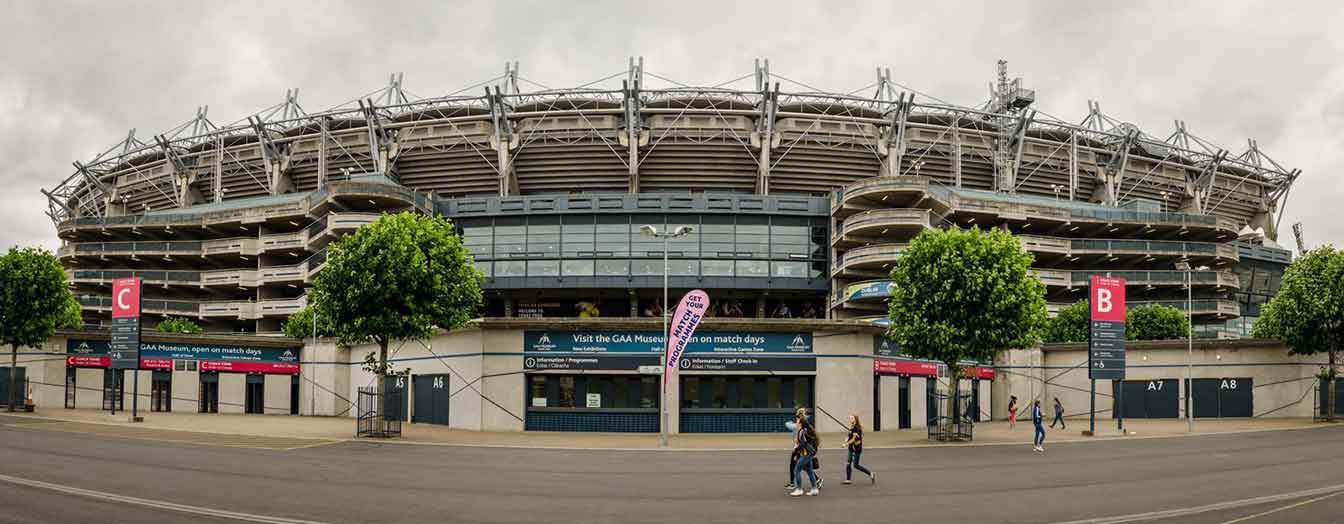 ©
© 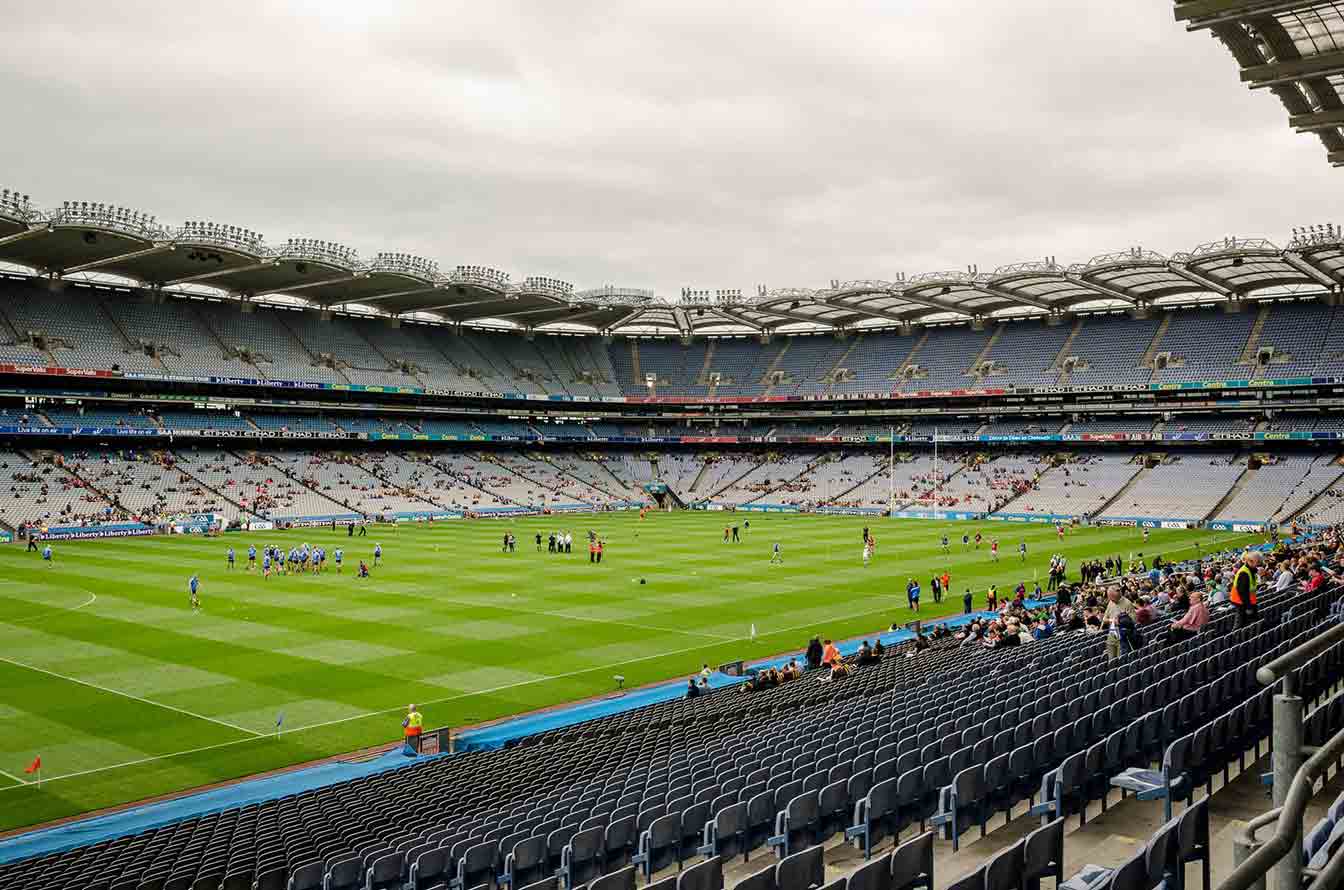 ©
©